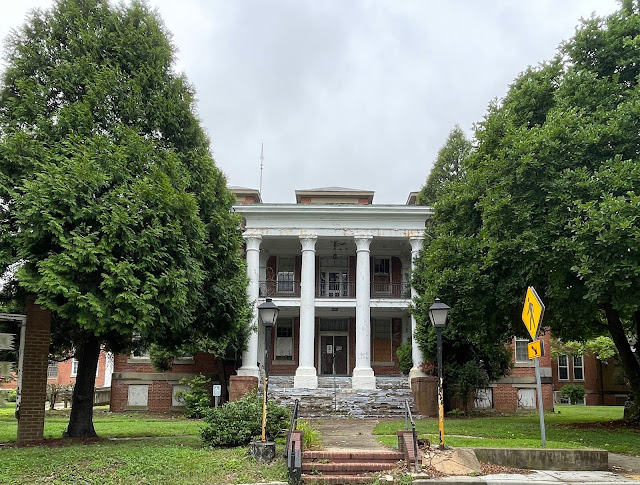In 1886, the State of Maryland established the State Lunacy Commission (SLC), consisting of the Attorney General and four others, including two physicians (who were generally members of the Faculty). Obviously, the commission's primary concern was the proper care of the state's insane, who for decades, had been "cared for" in the most dire and decrepit conditions.
Twice a year, members of the SLC visited public and private institutions, including almshouses, and reported to the commission. They also required reports from the institutions themselves. The SLC paid particular attention to the health of the patients and their living conditions, including methods used to subdue patients.
The goal of the SLC was to eliminate crowding in state mental hospitals and improve the manner of care for the patients by 1909. To help achieve this goal, several large hospitals were opened around the state, or updated from their former iterations.
The original mental hospital or asylum was at Bayview on the eastern side of Baltimore City. It was also known as the "poorhouse" something to which many residents' families objected. It had a terrible reputation and the conditions were very outdated.
The first purpose-built mental hospital was the Maryland Hospital for the Insane, founded by the legislature in 1797. Each county had an annual assessment of $100 for the care of their "lunatics" and became a lunatic and general hospital.
By 1837, it had ceased to be a general hospital and cared only for the insane. By 1857, land had been purchased to move the hospital to Spring Grove in Catonsville, to a campus of more than 135 acres.Next, in 1894, was Springfield in Sykesville, which was on a campus of more than 700 rural acres.
It adhered to the principles of Dorthea Dix, the social reformer who advocated for park-like settings, airy and open buildings, and even some vocational training. There were no bars on the doors or windows and few, if any, physical restraints on patients. The patients: men, women and epileptics, lived in colonies or groups of buildings for each group. Springfield was self-sufficient with a dairy, gardens and chicken coops.Crownsville, located on 477 acres in Anne Arundel County, was the hospital for the "negro insane."
It was established in 1910, and was specifically legislated not to be located in Baltimore City. Much of the construction work was done by the "negro inmates."As the years went by, the reputation of Crownsville became worse and worse, and the hospital was extremely overcrowded.The Mount Hope Retreat was a private, Catholic institution founded by the Sisters of Charity in 1840. In 1843, Dr. William H. Stokes became the supervisor of Mount Hope Retreat, located just north of Baltimore City and held the position for more than 40 years. Mount Hope was an atypical mental hospital – it was open and bright, and used non-restraint methods of care, and a cottage plan for residents.
There was an infamous trial against Dr. Stokes and the Sisters of Charity alleging assault and false imprisonment of several residents.
The lengthy trial came to an abrupt end when the State said that it was “…unable to sustain the indictment under the evidence offered. From beginning to end an utter shame and disgrace…” Dr. Stokes, whom the State had sought to brand as a liar and conspirator, was a gentleman whose life had been dedicated to the treatment of diseases of the mind.
In 1908 and 1909, the Maryland Medical Journal profiled each of these hospitals. If you click on the links above, you will be taken to the profiles.
Interestingly, the State Lunacy Commission employed some of the top architects of the day to design the buildings, which are each beautifully executed. The designs range from Beaux Arts to neo-colonial to Georgian revival.
Joseph Evans Sperry, who designed one of MedChi's buildings, was responsible for some of the work at Springfield. However, Henry Powell Hopkins was the Commission's architect of choice and he designed buildings at Crownsville and Springfield, as well as at the University of Maryland, which echoes some of Crownsville's Georgian revival buildings.



.jpg)
.jpg)
.jpg)
.jpg)

.jpg)


No comments:
Post a Comment